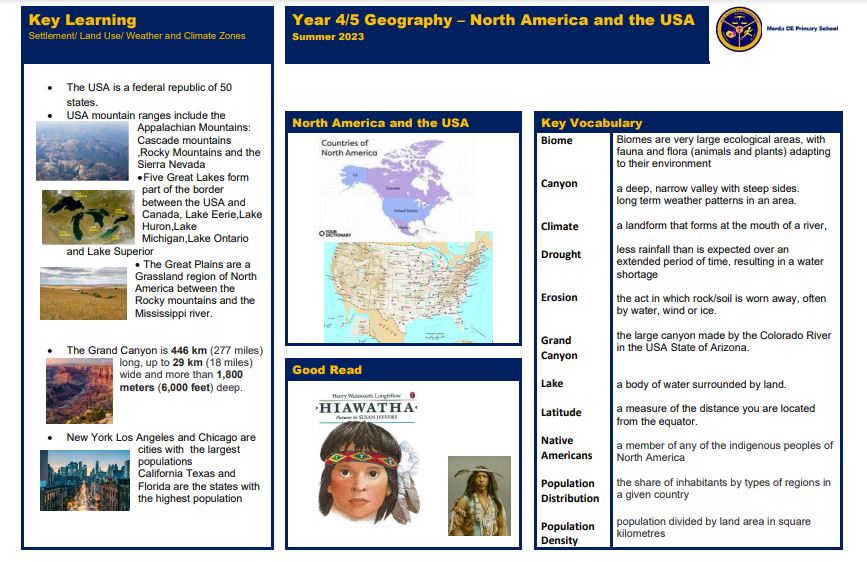|
This afternoon the children in Roses have been using their knowledge and understanding of notation in creating their own layered songs. They had to perform in groups and layer rhythms to create their piece.
0 Comments
This afternoon the children in Roses were learning to recognise simple rhythmic notation by ear and by sight. We learnt the lyrics in our songs (we had learnt in our previous lesson) were made up of minims, which are long notes, worth two beats. They were also made up of crotchets, which are shorter notes, worth one beat. And finally some were made up of quavers, which are short notes, worth half a beat each. We looked at how they were written in a piece of music and began practicing reading the musical notes in time. In pairs we learnt different patterns and shared them with the class. Please see below our class Knowledge Organiser for this term's learning - North America and the USA. This document has the key facts and vocabulary your child will learn this term. The Knowledge organiser can be used at home to help them revise and remember this knowledge. I have also attached this as a PDF so it can be downloaded at home. the document can also be found on our Geography page.
In literacy we read and acted out some of Henry Longfellow's epic story poem based in Native American myths and legends, " Hiawatha". We learned some Native American songs - and hope to perform some of the poem in our summer concert.
In PSHE this week we all did a short St John's Ambulance course learning how to help someone who is having difficulty breathing due to asthma.
This afternoon the children in Roses were learning how to sing in two or three parts. We began by warming up our vocal chords, and then learnt a song which was developed into singing in three parts. To begin with we all found it a little bit tricky as it was easy just to join the loudest group, but with practice our song sounded far more interesting! We videoed it and then discussed how we can make it better for next time!
|
AuthorThis is the blog of Roses(Year 4 and 5)
|










 RSS Feed
RSS Feed